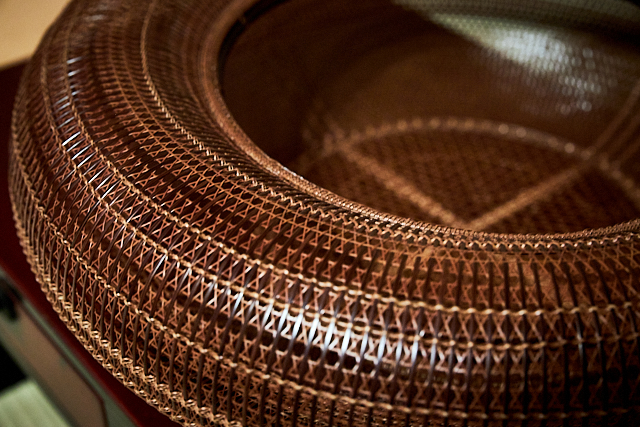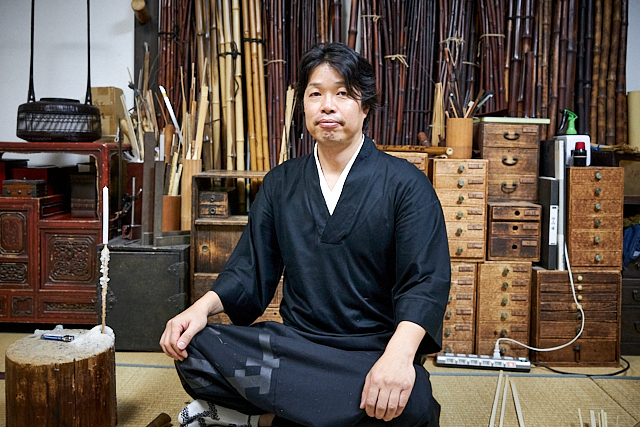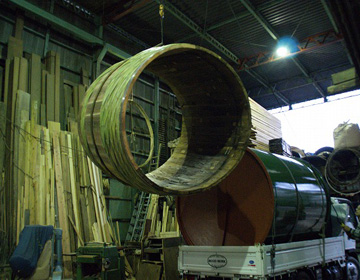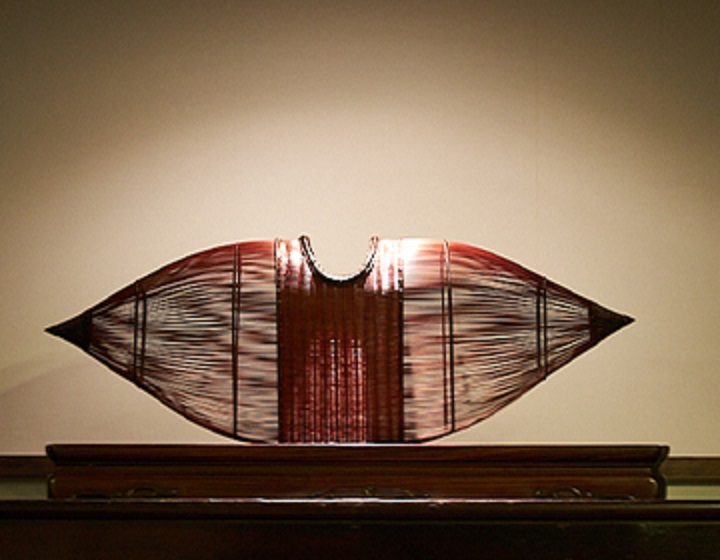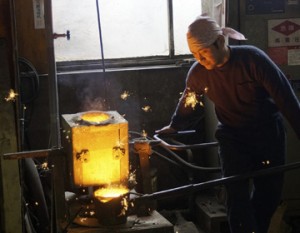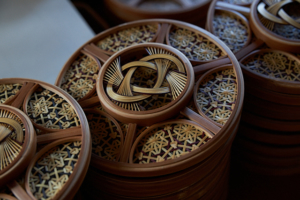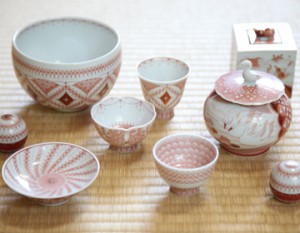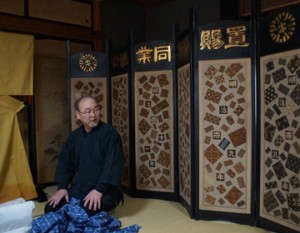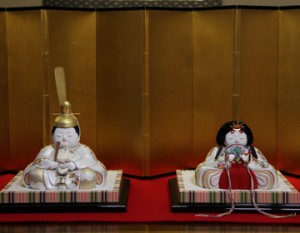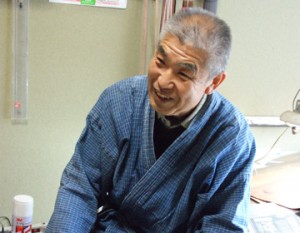Bamboo crafts have been passed down from generation to generation with each generation having its own unique style.
Bamboo craft artist Chikuunsai Tanabe IV creates his works in a small workshop in Sakai City, Osaka Prefecture. Passing through a lattice door, one comes to a small courtyard. To the left of the pathway lined with paving stones is a glass-walled room. Mr. Tanabe Chikuunsai IV, dressed in samue, and three young men are working silently. His works are in the collections of the British Museum, the Museum of Fine Arts, Boston, and the Philadelphia Museum of Art. His and successive generations of Chikuunsai’s works are displayed in the entrance and living room. Vases and objets d’art made of countless thinly shaved and woven bamboos. The curved surfaces of the bamboo have a delicate yet unique tension.
I have lived with bamboo crafts since I was a child. My grandfather and father used to work with bamboo in the house, and I learned to do it by watching and imitating them. I was also taught tea ceremony, flower arrangement, and calligraphy, all of which have come in handy today. When I was an art student in Tokyo, there were times when I wanted to pursue other paths, but in the end, perhaps it was embedded in my DNA, and I returned to my parents’ house to take over Chikuunsai.
Tanabe Chikuunsai is the name of a bamboo craftsman whose name has been passed down in Sakai. The first generation participated in domestic as well as international expositions from the late Meiji period to the early Showa period, the second generation created the technique of sukashi weaving, which expresses the beauty of light and shadow through the openwork of bamboo, and was awarded the Medal with Dark Blue Ribbon, and the third generation created a style of creating a surface by using arrow bamboo in a composition of dots and lines. Each generation has built up its own style while passing down the advanced techniques of bamboo craftsmanship.
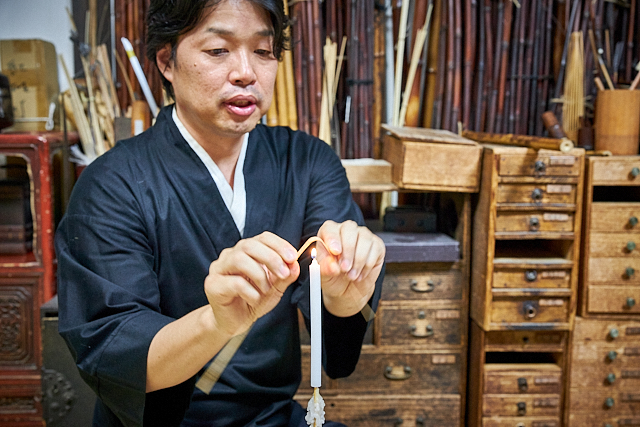
Preserving the Charm of Bamboo Crafts in Japan
While making traditional flower baskets and tea ceremony utensils, Mr. Tanabe has also exhibited his works at exhibitions and installations around the world, where he fills large spaces with bamboo works. Bamboo crafts can take any shape depending on how they are woven, but the giant objects, more than 8 meters tall and made of more than 10,000 bamboo strips, are incredibly powerful, even when seen in photographs alone. The artist said, “I move around with the bamboo strips and assemble them sensuously by looking at the space. When the exhibition is over, we dismantle them and move them again. Perhaps it can be said that bamboo is unique in that it can be recycled over and over again in this way.
In addition to his works, he also nurtures human resources. He has accepted 12 apprentices over the past 10 years, and has put a lot of effort into nurturing the next generation. When I trained under my father, it was like working with bamboo 24 hours a day without a break. But if we did that nowadays, no one would follow us. Both the works and the training methods must change with the times. As long as the essence of bamboo craft is conveyed, I think the system can change rapidly. I think the system should change as much as possible as long as the essence of bamboo crafts is conveyed to the next generation. Isn’t that the best job there is?”
Most of his works are also purchased by overseas collectors.
If you only think about business, it would be better to sell everything overseas,” he says. But that would mean that there would be no bamboo crafts left in Japan. That is why I would like to have about 20% of my products bought domestically, so that I can convey the appeal of bamboo crafts as much as possible. My current goal is to make bamboo crafts artists a job that everyone would admire.” Beautiful, yet somehow fragile, and with a strength that will not break no matter how much it bends or bends. It would be a shame to let the appeal of bamboo crafts be monopolized only by people overseas. Mr. Tanabe also actively holds exhibitions, workshops, and hands-on classes at his studio in Japan, so if you have a chance, please come and see his work.
